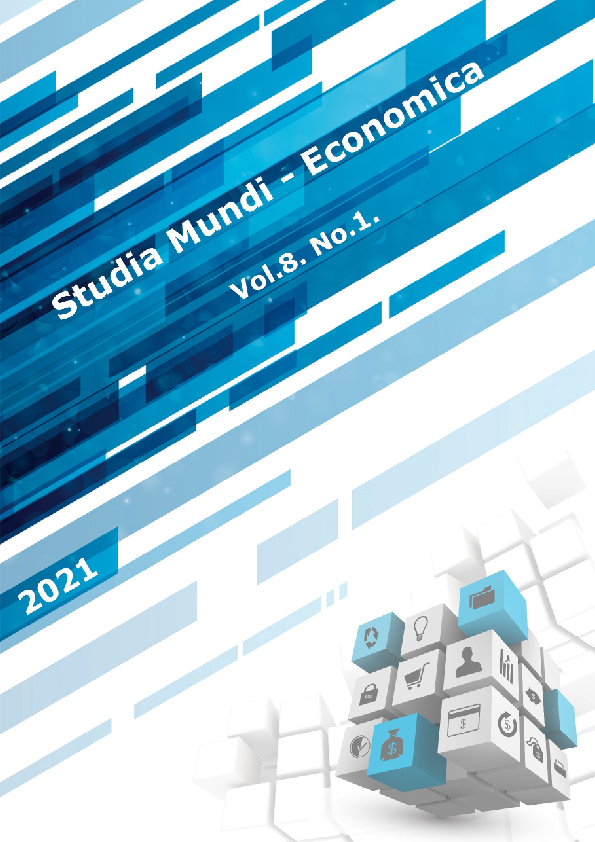Implementing of 5s rule in iron-steel industry company
DOI:
https://doi.org/10.18531/Studia.Mundi.2021.08.01.77-86Kulcsszavak:
Quality Management, 5S rule, Lean ManagementAbsztrakt
Nowadays, every company cares about reducing their waste and cost. While they are doing that they would prefer to make it effectively and efficiently. That is why the 5S rule is recently a more suitable tool to use for companies. In this paper, It was studied how to implement the 5S rule in an iron-steel industry company with an interview of a quality engineer who works in this company. This case study was made to be an example for the sector by photographing the before-after situations of 5S implementation. Which is carried out in the equipment and manufacturing departments of the iron-steel factory that is operating in Hatay. At the end of the 5s implementation, we may say that the risks, that may occur in the factory, are reduced, It helped to save much more time in production, and also the sustainability of the waste products has been formed to use for future needs in the factory.
Hivatkozások
A.Levinson, W. (2002). Henry Ford's Lean Vision: Enduring Principles from the First Ford Motor Plant. Productivity Press.
Ene Yalçin, S., Akin, S., Elmas, B., Eren, M., & Gündüz, T. (2020). Çelı̇k Boru İmalatinda Hazirlik Sürelerı̇ne Yönelı̇k Yalin Üretı̇m Ve Smed Çalişmasi. LEAN PRODUCTION AND SMED STUDY FOR SETUP TIMES IN STEEL PIPE MANUFACTURING., 31(1), 87–104.
Filip, F. C., & Marascu-Klein, V. (2015). The 5S lean method as a tool of industrial management performances. IOP Conference Series: Materials Science and Engineering, 95(1), 012127.
Gapp, R., Fisher, R., & Kobayashi, K. (2008). Implementing 5S within a Japanese context: an integrated management system. Management Decision, 565-579.
Ginting, S. E. F., Ramadhani, V. B., Tarigan, U. P. P., A., G., Simarmata, E., & Saragih, L. L. (2020). Implementation of Lean Service and 5S Methods to Increase The Efficiency of Service Time in Fire Department... AIP Conference Proceedings, 2227(1), 1–7.
Ghagare, S. D., Desai, A. A., Patil, R. B., & Siddha, U. Y. (2017). 5S IMPLEMENTATION IN SMALL SCALE INDUSTRY: A CASE STUDY. Adarsh Institute of Technology and research centre, 23-29.
Hirano, H. (1986). 5S for Operators: 5 Pillars of the Visual Workplace. ISBN-10: 1-56327-123-0 : Productivity Development Team.
Hossein Hojjati, S. M. (2011). Implementing 5s System in Persia Noor Factory. International Journal of Industrial Engineering, 18(8), 425–431.
Jakubiec, M., & Brodnicka, E. (2016). KAIZEN CONCEPT IN THE PROCESS OF A QUALITY IMPROVEMENT IN THE COMPANY. Research on enterprise in modern economy - theory and practice, 89-101.
Jiménez, M., Romero, L., Domínguez, M., & Espinosa, M. del M. (2015). 5S methodology implementation in the laboratories of an industrial engineering university school. Safety Science, 78, 163–172.
Jones, D. T., & Womack, J. P. (1997). Lean Thinking: Banish Waste and Create Wealth in Your Corporation. Journal of the Operational Research Society, 48(11), 1148-1148.
Karaman, M., Karatepe, H. K., & Kuşçu, F. N. (2019). Sağlık İşletmelerinde Performans Değerlendirme ve Ölçme Yöntemleri Hakkında Bir Derleme Çalışması. Yönetim Ekonomi Edebiyat İslami ve Politik Bilimler Dergisi, 153 - 171.
Kanamori, S., Sow, S., Castro, M. C., Matsuno, R., Tsuru, A., & Jimba, M. (2015). Implementation of 5S management method for lean healthcare at a health center in Senegal: A qualitative study of staff perception. Global Health Action, 8(1), 27256.
Karşıyaka, O., & Sütçü, A. (2019). Mobilya Üretim Süreçlerinde Verimliliği Artırmaya Yönelik 5S Uygulamaları. Bilge International Journal of Science and Technology Research, 87-101.
Matsushita, H. (2015). What Is 5S-KAIZEN? Asian-African Transnational and Translational Community of Practice in Value Co-creation of Health Services. In K. Kijima (Ed.), Service Systems Science (pp. 129–143). Translational Systems Sciences series, vol. 2. New York and Heidelberg: Springer.
Randhawa, J. S., & Ahuja, I. S. (2017). Evaluating impact of 5S implementation on business performance. International Journal of Productivity and Performance Management, 66(7), 948–978.
Shah, R., & T.Ward, P. (2007). Defining and developing measures of lean production. Journal Of Operations Management, 25(4), 785-80.
Zerenler, M., & İraz, R. (2006). Japon Yönetim Anlayışı Ve Şirket Ağları (Keiretsu) Analizi. Selcuk University Social Sciences Institute Journal, (16), 757-776.
Letöltések
Megjelent
Folyóirat szám
Rovat
License
Copyright (c) 2021 Deniz Horuz, Selim Çörekçioğlu, Stefan Raskovski

This work is licensed under a Creative Commons Attribution-NonCommercial-NoDerivatives 4.0 International License.
A folyóirat Open Access (Gold). Cikkeire a Creative Commons 4.0 standard licenc alábbi típusa vonatkozik: CC-BY-NC-ND-4.0. Ennek értelmében a mű szabadon másolható, terjeszthető, bemutatható és előadható, azonban nem használható fel kereskedelmi célokra (NC), továbbá nem módosítható és nem készíthető belőle átdolgozás, származékos mű (ND). A licenc alapján a szerző vagy a jogosult által meghatározott módon fel kell tüntetni a szerző nevét és a szerzői mű címét (BY).






